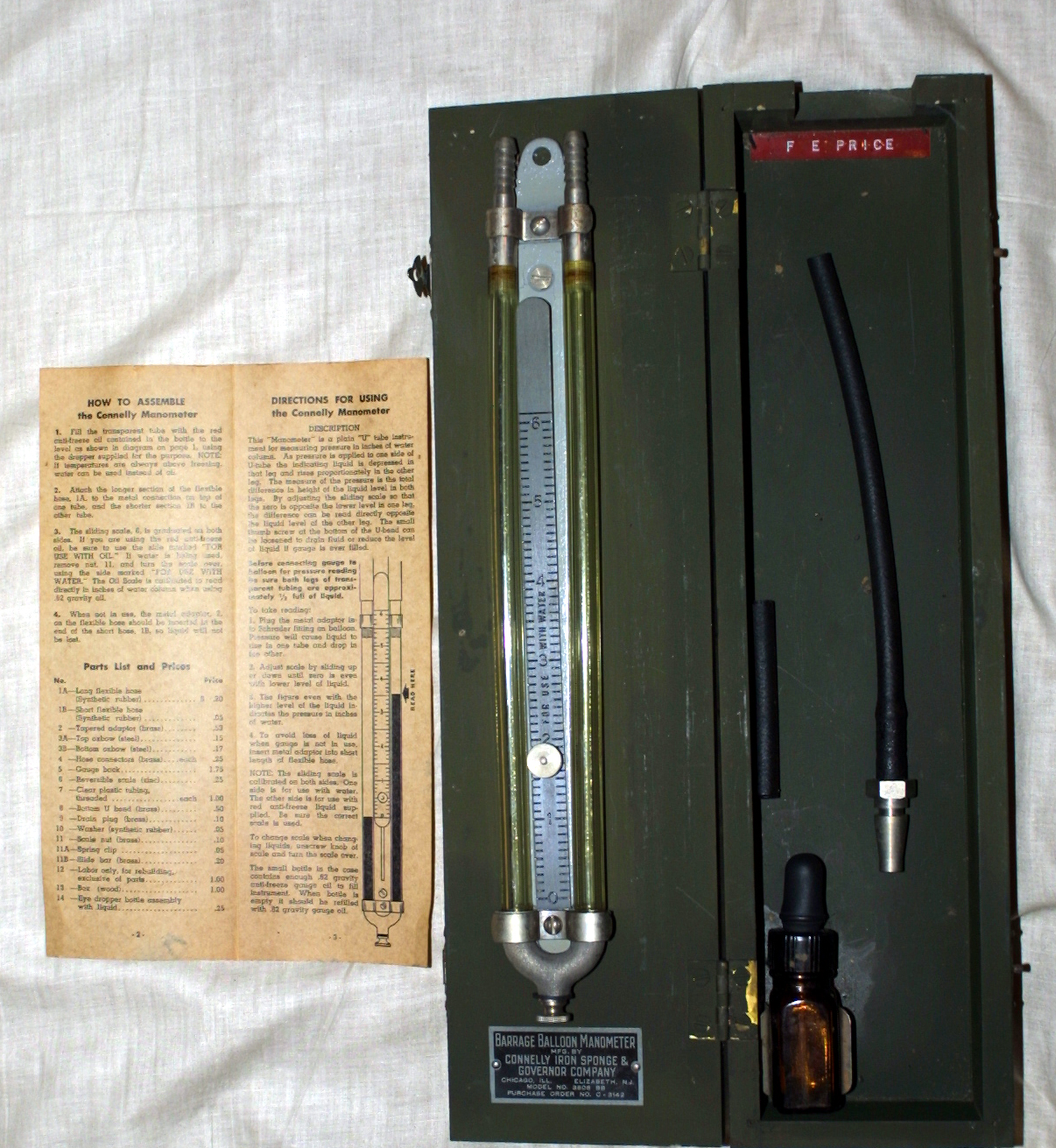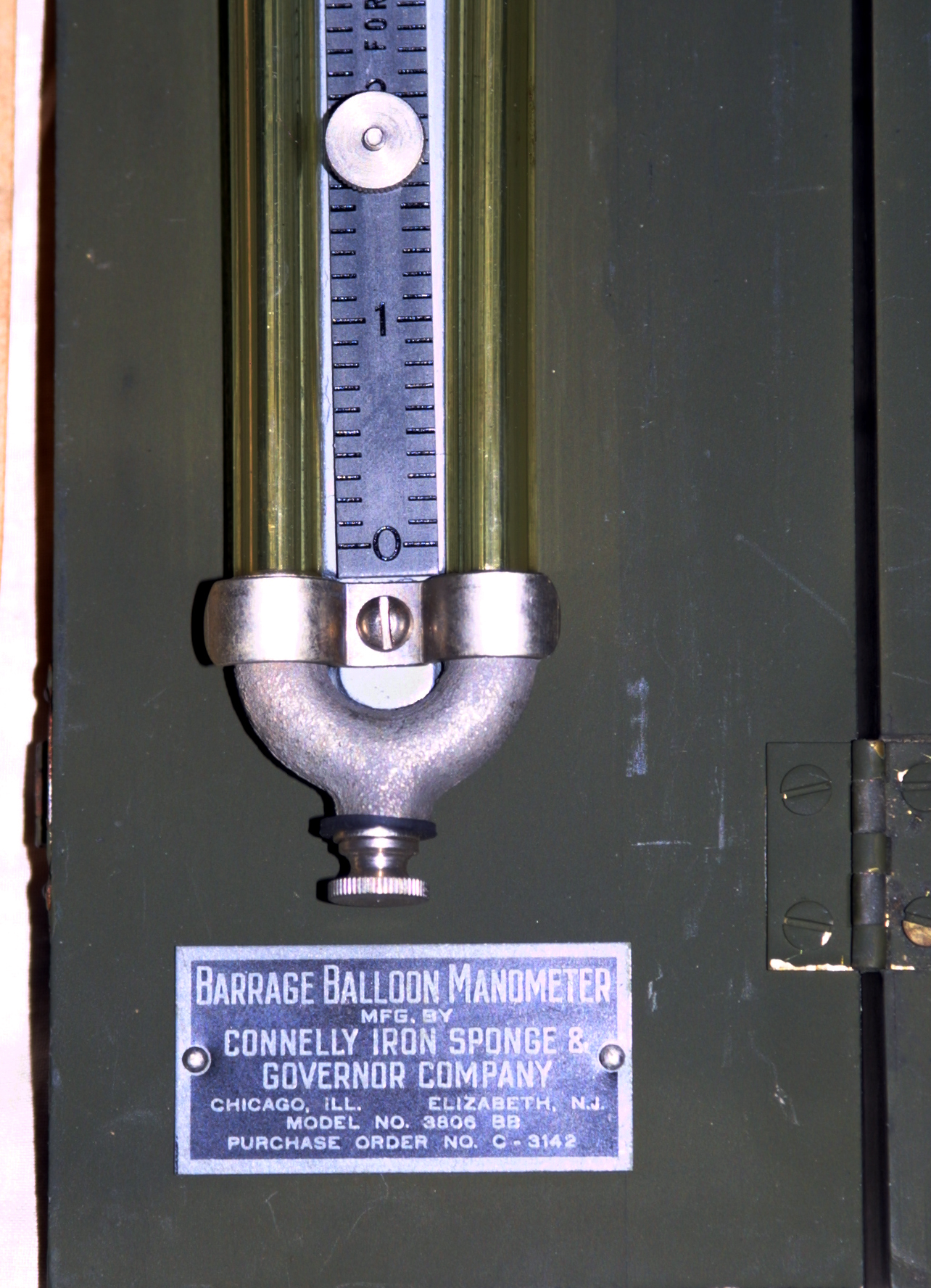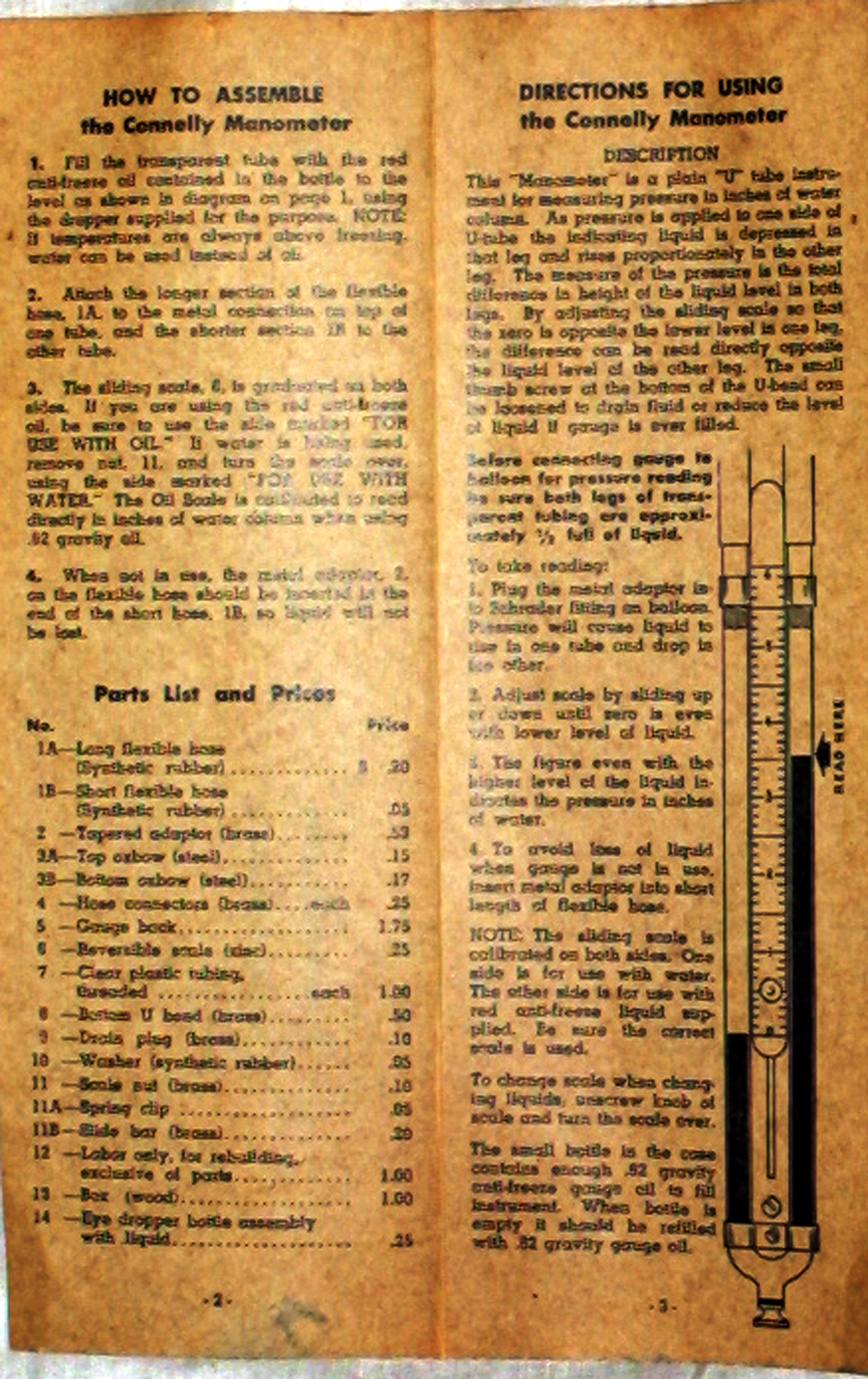 Click for Site
Directory
Click for Site
Directory The gas pressure in a balloon had to be maintained at a specific level or the balloon would not be able to rise up properly and on the other hand it had to be kept at a maximum level to prevent the balloon bursting when at high altitudes. As the higher the balloon got, the less the atmospheric pressure became, and as a result the higher the internal pressure of the hydrogen gas in the balloon also became. The balloon was fitted with a special pressure relieving system to prevent bursting but even with that fitted scientists had done some interesting work to calculate what the maximum pressure should be in a balloon before it was launched up to heights of 5,000 - 6,000 feet.
A convenient way of measuring pressure in a balloon or any gas filled object is to hook up a fluid filled tube to the balloon and then form the tube into a "U" shape and the gas pressure would force the fluid to rise higher up the external side of the tube. To do this in practice a special manometer was designed for barrage balloons. The manometer was connected to the barrage balloon by use of a Schrader valve. The manometer was made by the Connelly Iron Sponge & Governor Company in Chicago, Illinois and at another works in Elizabeth, New Jersey, USA. While this particular device was used for American balloons I have failed to find a similar device for British balloons but can only assume one existed.

The fine detail of the "U" tube is shown here:

This could be used with water or oil depending on the temperatures in the country of use. If using water then the scale was unscrewed and turned over to use the other side which was calibrated for water or oil and was marked accordingly. The instructions for assembly and use are as follows:
